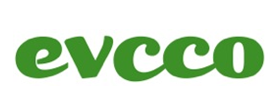
May 2019
Sydney, Australia
We all have standards and while there are some things that we tend to compromise on, safety is not one of them. If you knew that you were under potential threat and had no control over it, how would you react? While something has a standard, it doesn’t always mean that its safe… or to your standard, in fact.
Everyone is familiar with cladding in construction to provide thermal insulation and weather resistance, but in ongoing news, several Australian buildings have been declared ‘unsafe’ due to cladding fire risks. In fact, earlier this year a Melbourne apartment block was damaged in a combustible cladding fire which left hundreds of residents blocked from their homes; prior to this, this exact building was deemed as a ‘moderate risk’ building in a cladding audit.
And while we would like to think that this is not a recurring issue, back in 2017, 1400 buildings were declared unsafe to flammable cladding issues.
In a study by Fire & Safety Australia, more than 50% of building occupants felt that they wouldn’t know what to do in case of an emergency and weren’t clued up on the operating a fire extinguisher. So, where does this leave us?
Based on a string of recurring safety events such as these, the NSW Government has clamped down on local builders and designers by implementing stricter building laws for residential buildings only. Unfortunately, commercial, civil & infrastructure projects remain under the previous regime.
Amongst these is the requirement that all practices must be registered and that building plans must specify that the companies comply with the Building Code of Australia. Addressing loop holes on compliance puts safety and high standards back into our hands!
According to John McNab, CEO of Evcco – a leading Australian-made conduit supplier, being a transparent supplier or manufacturer in the industry is key to public safety. “We are dealing with peoples’ lives. Each time someone walks into a building, they place their safety into your hands and failure to comply will be brought to book”.
John also notes that the steps which Government has taken shows the severity of the situation. “We now have improved regulations and control in our industry, and I personally welcome this, but more can be done”, the controls & regulations must be applied across the board to all facets of construction.
Within buildings, conduit can be surface mounted or located within walls and floors. For large multi-story complexes, there can be kilometers of conduit running wires and cables, but there is an alarming risk. Currently two valid Australian Standards for conduit are used for cable management and electrical management.
Evcco’s membership of the Living Future Institute of Australia shows their commitment to transparent and safe manufacturing. Evcco’s products meet the Living Building Challenge materials requirements, including Red List Free ingredients and a Declare label issued by the Institute to provide full transparency. Declare is the nutrition label for building products. These labels make it clear if a product contains Red List chemicals (the worst class ingredients in the building industry) and also form a transparency platform and product database, changing the materials marketplace for manufacturers, designers, and developers.
John explains that transparency and ethical manufacturing is the name-of-the-game for Evcco. “We are very proud of our Red List Free status which we received from the Living Future Institute of Australia. With us, you can be sure that our products can be recycled and don’t contain harmful chemicals. When you choose a product with the Declare label you are making an informed decision”.
According to John it is important for customers to understand just what they are getting when they choose a standard specified conduit. Unfortunately, this is sometimes a confusing issue.
Under AS/NZS 2053, all conduit must be flame retardant, including HFT (Halogen Free Solar Protection) conduit. However, under AS/NZS 61386 conduit – and, in particular conduit that is classified HFT – can be flame retardant or non-flame retardant.
In the event of a fire, conduit that is compliant to AS/NZS 61386, but non-flame retardant can prove life-threatening.
Unintentionally – by adhering to AS/NZS 61386 – it is easy to make the mistake of assuming that all HFT is flame retardant. According to John, there are no short cuts. “Specifying ‘low smoke’ conduit may go some way toward risk mitigation, but this is also less than perfect. It is possible to label products as ‘low smoke’ without including specific performance measurements. The term is subjective; how much smoke is ‘low smoke’?”
Australian-made Evcco conduit fully complies with both standards and is LSZH-FR. Its flame-retardant properties come from non-toxic, halogen-free substances, rather than brominated and chlorinated flame retardants or BFRs and CFRs, which release toxic dioxins when burning at relatively low temperatures. It is 40% lighter than PVC yet has a higher impact resistance and is suitable for general recycling.
John concludes saying that there are no shortcuts when it comes to safety. “Thanks to the Government clamp down, suppliers are now being forced to comply. Be sure to partner with someone who has your company’s best interests (and safety) at heart”.
http://www.evcco.com.au/– watch the flame test on the home page.
About Evcco:
Evcco is a privately owned Australian manufacturer and the only manufacturer for true LSZH-FR conduit in Australia.
Albatech Pty Ltd, the manufacturer of Evcco products, is a technology driven enterprise involved with advanced polymer materials to deliver class leading performance. Our products are primarily used within the M&E sector and are often specified for use in areas of high traffic, high value assets and green buildings.
The Evcco brand of LSZH-FR (Low Smoke Zero Halogen Flame Retardant) conduit and fittings are manufactured by Albatech Pty Ltd. in Sydney, Australia. Emphasis is in t e production of eco friendly products that reduce or minimise environmental impacts caused by traditional materials. No toxic chemicals are used in the manufacturing process and our products, which are easily recycled, do not contain any Organo-Halides or Heavy Metals.
Contact details:
John McNab [email protected]
www.evcco.com.au
For editorial enquiries please contact:
Rene Rose [email protected]

